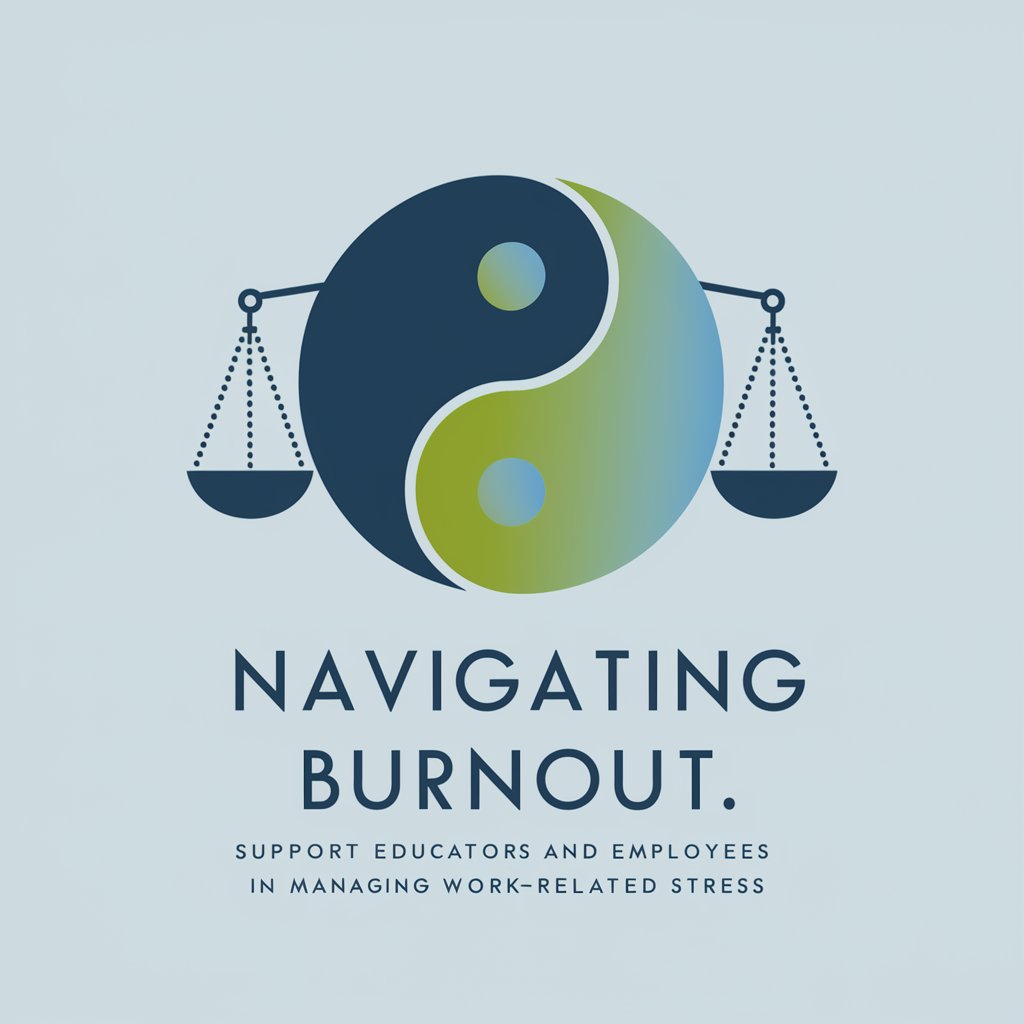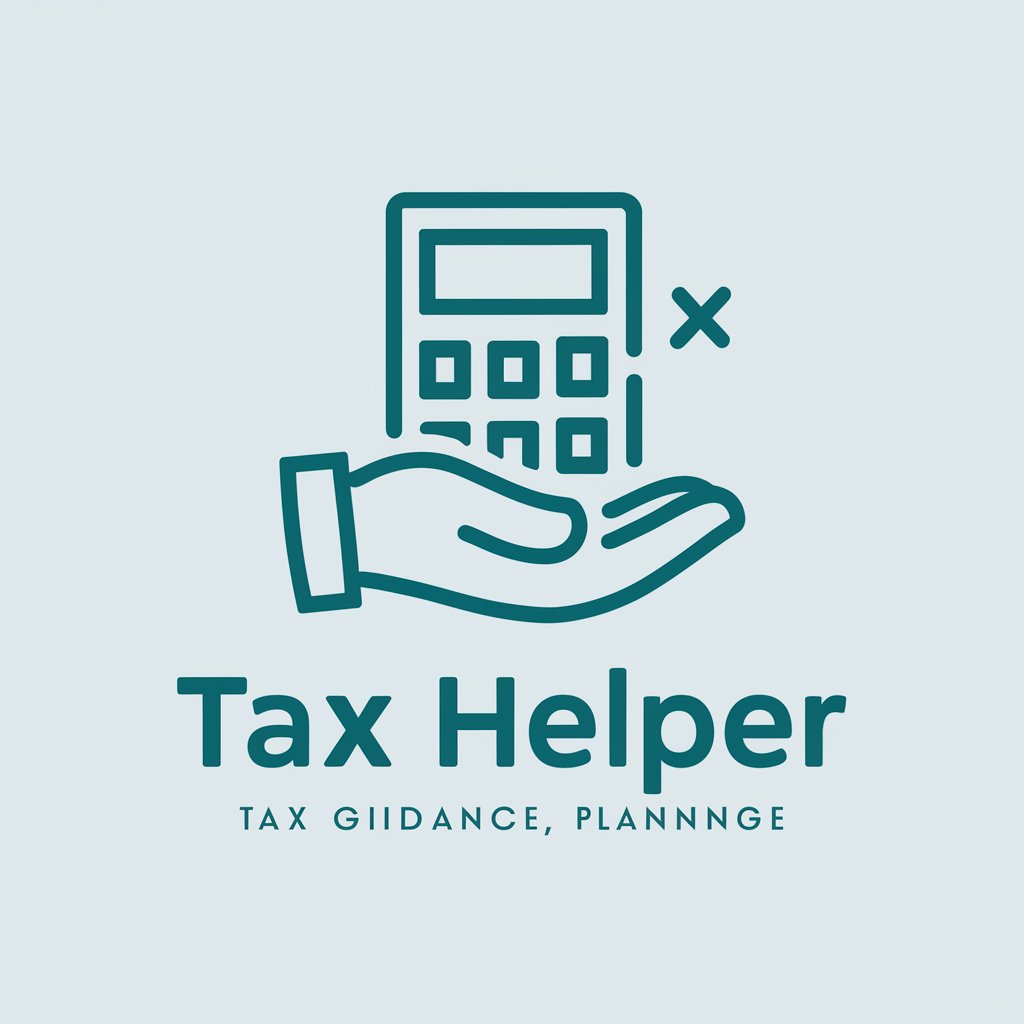How to be More Disappointing to Relieve Burnout - burnout relief through boundary setting

Hi there! How can I support you in navigating workplace stress today?
Empowering self-care with AI guidance
What strategies have you found helpful in managing workplace stress?
How can you advocate for better work-life balance in your role?
What challenges do you face in setting boundaries at work?
How do you prioritize self-care amidst your professional responsibilities?
Get Embed Code
Understanding 'How to be More Disappointing to Relieve Burnout'
The primary function of 'How to be More Disappointing to Relieve Burnout' is to offer guidance and support to individuals experiencing burnout, particularly in their professional lives. This approach is based on the counterintuitive principle that by consciously choosing to disappoint others in a calculated, respectful manner, individuals can set healthier boundaries, reduce stress, and prioritize their well-being. This involves identifying and challenging core beliefs that contribute to overcommitment and stress, such as the need to always meet others' expectations or the fear of saying no. Examples of this principle in action include an educator deciding not to volunteer for an additional after-school program, despite the expectation to always contribute extra, or an employee choosing to decline a new project that would require working weekends. Powered by ChatGPT-4o。

Key Functions and Use Cases
Self-reflection and identification of burnout sources
Example
An educator realizes they feel burned out because they've been taking on too many responsibilities without adequate support. They recognize a belief that they must always be available to maintain their reputation as a dedicated teacher.
Scenario
By identifying specific causes of their burnout and the underlying beliefs, they can begin to address these issues, setting realistic expectations for themselves and communicating their limits to colleagues and administrators.
Guidance on setting boundaries and advocating for oneself
Example
A corporate employee feels overwhelmed by constant after-hours work requests. They decide to set clear boundaries by communicating availability and negotiating deadlines that are realistic.
Scenario
This allows the employee to manage their workload more effectively, reduce stress, and improve their work-life balance, ultimately leading to a healthier professional life and preventing burnout.
Planning and implementing strategies to address burnout
Example
A healthcare worker identifies that a lack of personal time and self-care activities is contributing to their burnout. They plan to request a more flexible schedule and commit to regular self-care activities.
Scenario
Through this approach, the healthcare worker not only advocates for a work environment that supports their well-being but also takes proactive steps to incorporate rest and rejuvenation into their routine.
Target User Groups
Educators
Educators often face high demands, limited resources, and the expectation to commit extra time. This group benefits from learning how to set boundaries, prioritize tasks, and advocate for support to manage stress and prevent burnout.
Corporate Employees
Employees in the corporate sector may experience intense pressure to meet deadlines, perform at high levels, and be constantly available. They can benefit from strategies to communicate their needs, manage workload effectively, and maintain a healthy work-life balance.
Healthcare Professionals
Given the emotionally and physically demanding nature of healthcare work, professionals in this field are particularly susceptible to burnout. Learning to set professional boundaries, seek support, and engage in self-care can be crucial for their well-being.

How to Utilize 'How to be More Disappointing to Relieve Burnout'
Start your journey
Begin by visiting yeschat.ai for an introductory experience without the necessity of login or subscription to ChatGPT Plus.
Identify burnout symptoms
Reflect on your feelings and work habits to recognize symptoms of burnout, such as chronic fatigue, irritability, and a lack of accomplishment.
Explore core beliefs
Use the tool to identify and challenge core beliefs that contribute to burnout, focusing on perfectionism, fear of disappointment, and the inability to set boundaries.
Plan actionable steps
With guided prompts, plan specific actions to advocate for your needs, including setting realistic goals, communicating boundaries, and seeking support.
Implement and reflect
Apply the strategies in your daily work life, regularly reflect on your progress, and adjust your approaches as necessary to ensure sustainable change.
Try other advanced and practical GPTs
舒缓心灵 Relieve Heart
Unlock Emotional Growth with AI Wisdom

Believer
AI-powered guidance grounded in faith

Dr. Albert Einstein
Visualizing Physics, Simplifying Complexity

I BELIEVE IN YOU
Empower Your Mind, Transform Your Life

MJ v6 story creator
Craft compelling stories with AI

Prompt Witch MJ v6
Crafting visual art with AI precision

Pet Pal Guide
Empowering pet care with AI guidance

DIY Helper
Empowering your DIY projects with AI assistance

Grumblebeard the Grouchy Sage
Challenge Your Mind with AI-Powered Philosophy

Tax Helper
AI-powered Personal Tax Assistant

Corporate Lingo Pro
Elevating corporate speak with AI wit

Search
Unlock knowledge with AI-driven search

FAQs on 'How to be More Disappointing to Relieve Burnout'
What is 'How to be More Disappointing to Relieve Burnout'?
It's a tool designed to help individuals recognize and address work-related burnout by embracing the concept of disappointing others as a means to set healthy boundaries and prioritize self-care.
How can it help me manage burnout?
By guiding you through a process of self-reflection, identifying harmful core beliefs, and helping you plan and implement strategies to set boundaries and reduce stress at work.
Is this tool suitable for everyone?
While particularly beneficial for employees and educators experiencing burnout, its principles can apply to anyone seeking to improve their work-life balance and mental health.
How often should I use this tool?
Use it as often as needed. Regular reflection and adjustment of your strategies can help make lasting changes to manage burnout more effectively.
Can this tool replace professional help?
While it offers valuable support and guidance, it does not replace the need for professional advice from a healthcare provider or therapist, especially in severe cases of burnout.
